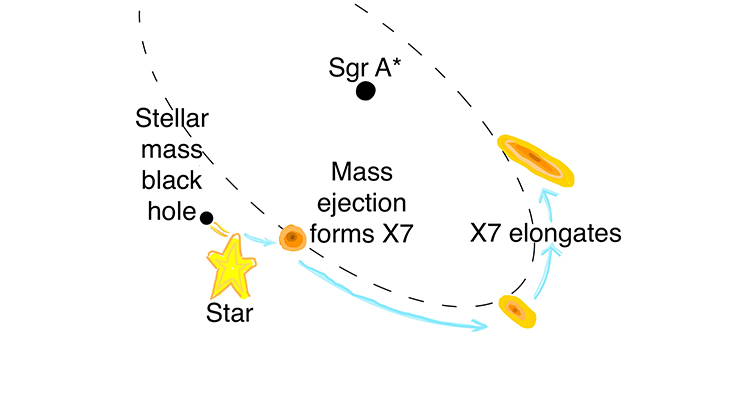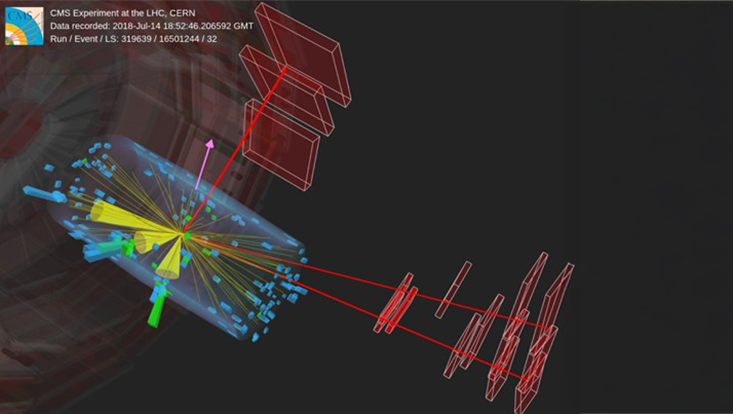Tidal phenomena in the center of our galaxyA mysterious cloud near the Milky Way's black hole is being torn apart
20 August 2025
In a recent paper published in the journal Astronomy & Astrophysics, researchers from the Cluster of Excellence Quantum Universe have investigated a cloud of dust and gas near the black hole at the center of our galaxy. X7, as this astronomical object is called, has significantly changed its shape over the past twenty years and the recent findings shed more light on the possible origins of this development.
The Galactic Center is one of the most extreme environments in our galaxy. It is a crowded, turbulent region where stars and gas orbit a supermassive black hole with four million times the mass of our Sun, known as Sagittarius A*. Among the many curious objects in this extreme neighborhood is X7, a cloud of dust and gas that has been changing shape dramatically over the past two decades.
X7 isn’t just drifting, it appears to be stretching, possibly due to the immense gravitational pull from Sagittarius A*. This idea was explored in depth by Dr. Anna Ciurlo, lead author of a 2023 study at University of California (UCLA). Their work proposed that X7 might be undergoing tidal interactions as it moves closer to the black hole.
Inspired by these findings, Wasif Shaqil, as part of his Master’s thesis at the University of Hamburg, led a new study to investigate the origin of X7. Working under the guidance of Dr. Diego Calder´on in the group of Prof. Dr. Stephan Rosswog at the Hamburg Observatory, and in collaboration with UCLA astronomers including Nobel laureate Prof. Dr. Andrea Ghez, Shaqil traced X7’s motion back in time using computer simulations.
The study suggests that X7 may be the aftermath of a grazing encounter between a star, likely S33/S0-30, and a compact object such as a stellar-mass black hole or giant planet. This close encounter, which may have occurred around 1950, could have ejected material that formed the elongated cloud now orbiting near Sagittarius A*.
“By simulating thousands of possible trajectories, we were able to find a scenario that fits X7’s current shape and motion surprisingly well,” says Shaqil. The project was primarily supported by a postdoctoral grant from the Cluster of Excellence “Quantum Universe”.
X7 is expected to reach its closest point to the black hole in 2035. As it gets nearer, it may continue to change, and astronomers will be watching closely, hoping to learn more about how black holes interact with their surroundings.




